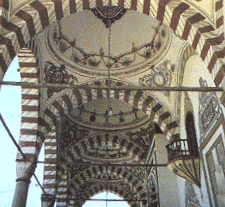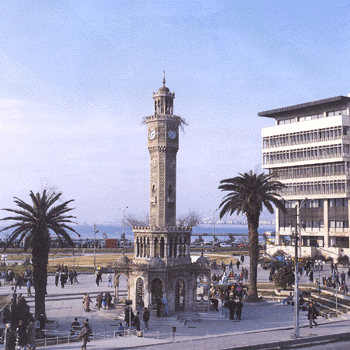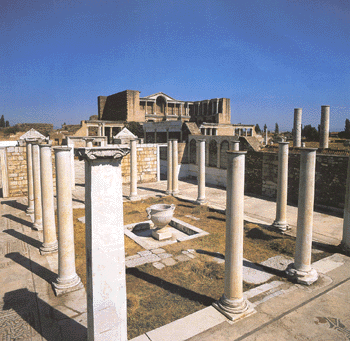MANISA
The attractive Aegean city of Manisa preserves several splendid examples of Seljuk and Ottoman architecture. Endowed by Ayse Sultana, mother of Suleyman the Magnificent, the Sultan Mosque was built early in the 16th century. Every year in April, on the grounds of the mosque, a festival is held celebrating Mesir Macunu, a sticky elixir that reputedly cured the sultan’s ailing mother. The 16th-century Muradiye Mosque was designed by the great architect Sinan.

Kula, Manisa
The adjacent medrese, or theological college, houses the Archaeological Museum. The annual Harvest Festival begins in September when the fruits of the vineyards are harvested amid great celebration. The region’s numerous vineyards produce grapes that are then dried for export. South of the city lies the Sipil Dagi National Park, home of the famous “crying rock” of Niobe. If you travel to the northeast you come to Gordes, a pleasant town particularly known for its fine carpets.

Manisa
The ruins of ancient Sart (Sardis), once the capital of the Lydian realm of Croesus, lie on theSart Cayi (Pactole River) plain. The world’s first coins were minted here. The Temple of Artemis and a restored gymnasium testify to the city’s past splendor, as does the important third century A.D. synagogue. On the south side of Sardis, Mt. Boz (ancient Mt. Tmolus) is good for hiking and other mountain sports.

Sultan Mosque, Manisa



